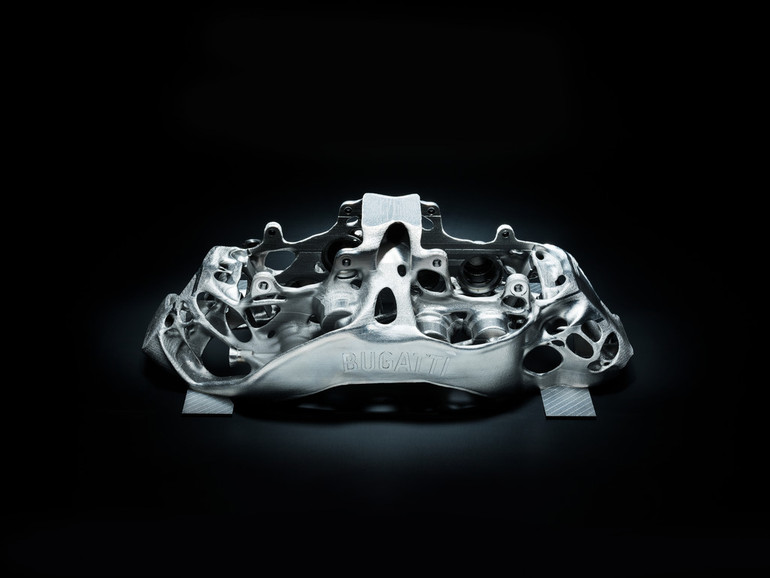Not to be outdone by flight-integral 3D printed parts, automotive is gradually placing additively manufactured components in more critical positions.
Largely implemented in spare parts initiatives, 3D printing is in use at a number of car manufacturers including Mercedes-Benz, Ford and Volkswagen.
In the latest use case, 3D printing is implemented for next generation development of the Bugatti Chiron – a car with a price tag close to $3 million.

The Chiron is the “most powerful, fastest and exclusive production super sports car” in Bugatti history, reaching record-breaking speeds of up to 400 km/h, and achieving a power output of 1,479 bhp.
Now the subject of “a new coup,” Bugatti designers have 3D printed a metal Chiron brake caliper, in a move that has placed the brand at the forefront of auto additive manufacturing.
Frank Götzke, Head of New Technologies in Technical Development at Bugatti Automobiles S.A.S., comments, “In 3D printing development, Bugatti is the leader in the Volkswagen group,”
“…It was a very moving moment for the team when we held our first titanium brake caliper from the 3D printer in our hands.”
A “world first”
Reported as a “world first” in automotive, the Bugatti 3D printed caliper was 3D printed using an SLM 500 machine in a job lasting 45 hours. The remarkable qualities of this component is, in the first instance that it is made from titanium, rather than aluminum, and that it is ready to be installed in-car for testing.
In 2014, Arcam/Hardmarque Future Factories produced an EBM 3D printed metal brake caliper, but it does not appear that design reached the stage of an active vehicle test.
Bugatti tells us that they are still in development phase and will enter testing trials on the car later this year, they cannot confirm if metal 3D printing will be used in series production at this stage. Series production tests for the Bugatti brake caliper will start later in 2018.

Technically impressive, and easy on the eye
Ideas for Bugatti’s 3D printed brake caliper went from design to component in just 3 months. It was made in collaboration with Laser Zentrum Nord, a German research institute that joined the Fraunhofer family in November 2017.
In total, it is made of 2,213 layers, and is capable of withstanding up to 125 kg per square millimeter before breaking. After 3D printing, it was treated with chemicals, milled over five-axis, and polished to finish.
Measuring 41 cm x 21 cm x 13.6 cm (L x W x H) the part claims, by volume, to be “the largest functional component” 3D printed out of titanium. It is also 2 kg lighter than its 4.9 kg machined aluminum counterpart.
Bugatti’s Frank Götzke adds, “Everyone who looks at the part is surprised at how light it is – despite its large size,”
“Technically, this is an extremely impressive brake caliper, and it also looks great.”
Stay ahead of the curve by subscribing to the free 3D Printing Industry newsletter, following us on Twitter, and liking us on Facebook.
Does this application of 3D printing warrant an award? Nominate the best additive manufacturing applications in the 2018 3D Printing Industry Awards.
Featured image shows Bugatti’s “world first” SLM 3D printed brake caliper. Photo via Bugatti Automobiles S.A.S.



